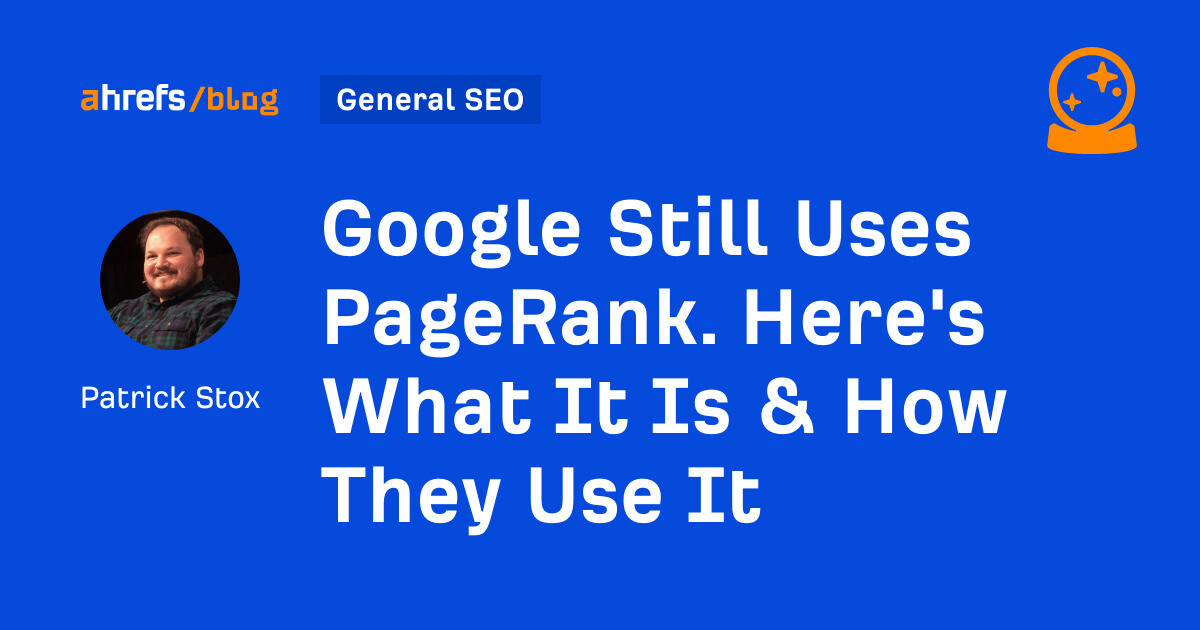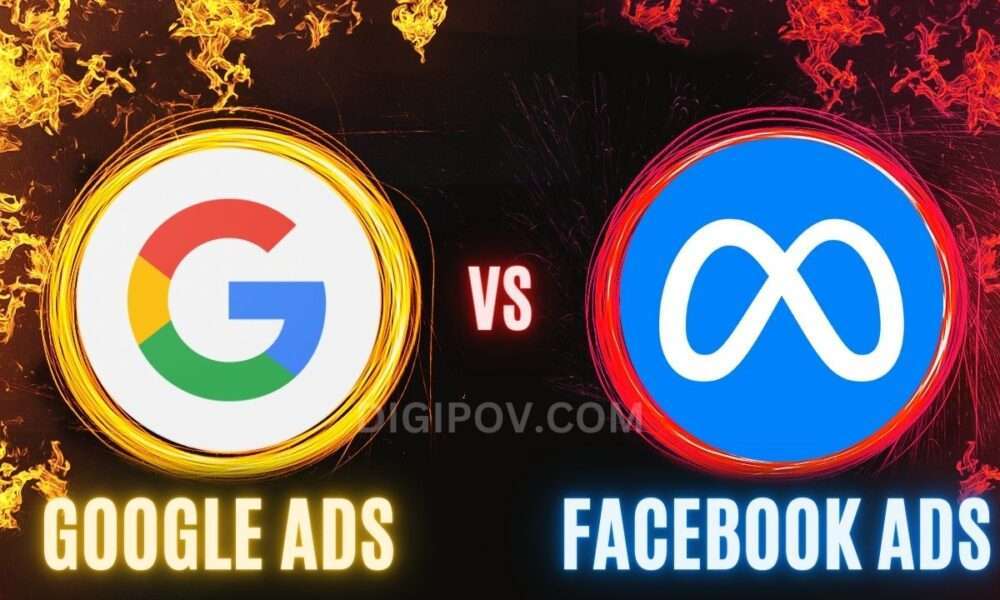Can you start email marketing without a website?
This article will help you see how to start email marketing without a website, the difference between email marketing and website marketing, best email marketing websites.
As a bonus,
If you are new to an Email account and how to create one, this content is for you. This is the beginner guide you need to get started.
You want more customers/clients both old and new to keep returning to your website, web store/e-commerce website, or even a Blog. Well, you have this focus to start email marketing but are those who do not have a website also neglected from using email marketing?
Well, before going deep into the topic, how about we get the topic real and clear for everyone. What do you understand by Email marketing? Fact that you have a smartphone or a laptop with internet access, you will get the easiest pattern to what email marketing is. I will touch a part of this to make it better worth the time.
What is Email Marketing?
Email means – Electronic Mail, a mail that is sent through the aid of the internet, while marketing is explained according to Oxford Dictionary as ‘the action or business of promoting and selling products or services, including market research and advertising.
Adding Email and marketing together mean – promotion mails sent through the internet. An example of email accounts refers to Gmail, YahooMail, Outlook, etc. When you create accounts with any of those third-party sites, you can be able to receive email marketing campaigns sent to you through your personal email.
How can I receive Email Marketing?
As I said earlier, you must have an email account to be able to receive email marketing. This is something you should create. With your email, you can send messages to companies, Friends, and Families. Do you know how to create an Email account? This is how
How to create an Email account?
As I rightly mentioned, there are several Third-party email websites you can create an account with, but one of the popular ones we will use in this tutorial will be Gmail.
Steps to create a Gmail Account

Gmail is one of the most used email services around the world. If you want to create a Gmail account in just a few simple steps you can create it. But before that, you need to sign up for a Google account. To create a Gmail account you need to provide some basic information like your name, birth date, gender, and location. Even you have to choose a name for your new Gmail address (also known as your Email Address). So what are you waiting for? Follow the below steps and create your own Gmail account with the quick sign-up process.
Steps to create a Gmail Account?
You can use your username and password to sign in to Gmail and other Google products like YouTube, Google Play, and Google Drive. Follow the steps, create your Gmail account and start sending emails.
Step 1: Visit Google account creation page, accounts.google.com
Step 2: Click on Create account.
Step 3: The sign-up form will appear. Enter your first and last name.
Step 4: Choose a Username for your account. (Here you can also use an existing email address)
Step 5: After choosing a username, enter a password. Type the password again to confirm. (As per Google’s instruction always use 8 or more characters with a mix of letters, numbers & symbols)
Step 6: At last tap on Next. (Right corner of the screen)
Step 7: On the next page enter your phone number to verify your account. (It is a two-step verification process for security)
Step 8: On the given mobile number you will receive a text message from Google with a verification code. Enter the verification code and tap on Verify.
Step 9: On the next page enter your DOB in the specified fields.
Step 10: Choose a Gender.
Step 11: Tap on Next.
Step 12: Read, Google’s Terms of Service and Privacy Policy will appear on the screen and click on I agree.
Congratulations! your account has been created. From now onwards every time you sign in you just have to enter your email id and password. And every time you sign in don’t forget to sign out because it prevents others from viewing your emails. Do you know how to sign out?
Now, you did it. You just created your email address and you can get so many email marketing messages. If you have been reading from the top of this article, I dropped a question that I promised to get back to, do you still remember? Anyway, here is the question again, are those who do not have a website also neglected from using email marketing?
Can you start email marketing without a website?
I made mention of how to get started with email marketing, which I explained, you will need an email account, and I hoped you have created your own Gmail account? If you have not created your email account, please, scroll up to the section where I explained the steps to create a Gmail account.
The question again is; Can you start email marketing without a website? The answer is Yes. There are so many ways to run email marketing even without you having a website of your own.
Email marketing, do you know about running an email marketing campaign? Is it with your Gmail account, you will start sending email marketing? Well, here is how to get it well sorted. There are examples of Email Marketing websites you can you to run email marketing. I will list out the 7 best email marketing websites for you to choose from.
Best email marketing websites
With this list, you can decide to pick one out of it and use it for your email marketing campaigns. Keep in mind, not all of these email marketing websites are free but mind you, you can use them for a short time, which is your trial period, if you like how they work, then, you can use them for as long as you want.
- Mailchimp
- GetResponse
- Aweber
- Drip
- Convertkits
- SendinBlue
- Constantcontact
With any of these email marketing websites, you are one step away from sending your first email marketing campaign. As you can remember, I answered the question I asked at the beginning part of this article, I said, you do not need a website to start email marketing. Anybody can start marketing today without having a website. I know it should confusing but here is how.
How to start email marketing without a website?
For you to get started, you need to of choosing one out of the list of the 7 best email marketing websites, ones you have chosen. You create an account with either one of them. There is a list of integration methods to choose from.
You can create email marketing using your Social media accounts like Facebook, Twitter, Instagram, etc. So, it’s left to you to also choose other options.
Here is an example; let say you chose the Mailchimp Email marketing website. Here are the steps to follow
Step 1: Create an account with Mailchimp
Before you start
Here are some things to know before you begin this process.
- Mailchimp is a web-based application. While it doesn’t require you to install or download software, your web browser needs to meet our requirements.
- You’ll need to provide an email address that will be associated with the account. We will use this email to communicate with you, so it should be an email address that you have access to.
- Your Mailchimp username must be unique, and cannot be reused.
- You must include a physical mailing address in all emails. This can be any address where you can receive mail, like an office address or P.O. Box.
- All accounts start on our Free plan, so you don’t need a credit card to sign up. If you choose to purchase add-ons or upgrade to a paid plan, we’ll need your credit card information. We can’t accept bank transfers, e-checks, or checks from users outside the United States.
Sign up for an account
When you create a Mailchimp account, you agree to comply with our Terms of Use and anti-spam regulations. To maintain a positive sending reputation and keep your account in good standing, it’s important that you remain in compliance with these policies.
To create your account, follow these steps.
- Navigate to Mailchimp’s signup page.
- Type in your Email, Username, Password, and click Sign Up.

- Next, we’ll display a confirmation message. Check your inbox for the account activation email to complete your account setup.
Note
- The time it takes to receive the activation email can vary. If you haven’t received the activation email, check your spam folder and read our activation email troubleshooting tips.
- Mailchimp blocks signups from role-based email addresses like [email protected] or [email protected].
Activate your account
After you receive the account activation email from Mailchimp Client Services, you can complete the account setup.
- Open the account activation email and click Activate Account.

- On the Confirm Humanity screen, click I’m Not A Robot to get started.

The signup process
The first time you log in to your account, we’ll ask for the required information. We use this information to provide content that is relevant to you and your company’s needs, as well as to help make sure your account is compliant with our Terms of Use.
In this section, you’ll learn how we use this information.
- Name
The name is associated with your account profile. The profile is unique to you and can have access to multiple Mailchimp accounts. - Email Address
The email address where we’ll contact you. Make sure it is an email address you have access to. The reply email address that you use to send emails can be different from this email address. - Organization Questions
Details about your company. These help us provide relevant content and guidance. - Organization Name
The name of your company or organization. It will appear on every email with your physical mailing address. - Website URL
The website URL for your company, organization, or personal website. - Physical Address
The mailing address where you can receive mail. A physical address is required by law on any email you send out. Ideas for a physical address include your personal address, business address, or a P.O. box.
After you type in the information, follow the prompts to finish the process and log into your new Mailchimp account.
Next steps
After you activate your account, get to know Mailchimp’s features.
- Getting Started with Mailchimp
Get an overview of Mailchimp basics to get started. - Verify your domain
Verification makes sure you’re From email address is hosted at a domain that you can access. If you want to send from a person or company domain, you’ll need to go through the verification process before you can send through Mailchimp.
It’s best to send email campaigns with a personal or a company domain. Many free email providers have implemented DMARC authentication policies that affect the delivery of email campaigns that use a free provider’s domain for the From email address. - Add other people to the account
If you want multiple logins for your account, you can invite users. Set different levels of permission based on how much access you want each user to have.
Step 2: Choose integration methods for your Email Marketing Campaign
I will advise you to get familiar with Mailchimp, with this. It will be easier to move around and know the needed steps and processes to follow.
This is How you can get it settled. You can send email marketing even without having a website, store, or even blog. As far you have the emails of your clients but old and new, you can send email marketing to them, telling them about the need to return to your business, or when there is a promo or discount. You can do anything, with email marketing, you can send over a million emails to people at a goal with beautiful backgrounds and templates that best suit your adverts.
There are differences you might get confused with
Difference between email marketing and website marketing
These two, people mix it up at times but there are differences among this two. We will want you to see it in a clearer way right from its name.
Email marketing is promotional emails, they do not require you to visit a website to get the message or advert. These messages are sent directly to a person’s personal or business email address through an email marketing website like Mailchimp.
Website marketing is sometimes done through email marketing. There are some websites you might have visited for a time and might have opt-in your email address to receive updates and notifications, you will get this message through your emails.
What is Website Marketing?
Website marketing is the strategic promotion of a website to drive relevant traffic to the site. The goal is typically to attract people who may be interested in a company’s products or services. More traffic coming to a site means more opportunities to put your value proposition in front of potential customers.
The goal of most website marketing strategies is to rank highly in search engine results pages (SERPs) through the implementation of search engine optimization (SEO) tactics, content marketing, social media engagement, and other digital and offline efforts.
In the majority of industries, pages that rank in the first SERP position gets more than 50% of the traffic for their target keywords. There’s a steep drop-off for pages ranking in the second and third positions, and pages in positions 5-20 compete for less than 5% of traffic.

Properly managed, a website marketing strategy can help your business attract new customers and ultimately expand your business’s share of the market.
Your website is your best marketing tool
These days, your brand’s website is the primary channel in which users can learn about your brand and take actions that directly contribute to the growth of your business.
Inbound digital marketing strategies are shaped like a funnel. Your customers are on the internet, using search engines, browsing articles, and using apps. It’s the job of your inbound strategy to pull people toward your website where they can read and view your content and ultimately make a purchase decision.
An optimized website provides a branded customer experience that answers questions and demonstrates the unique value of your offerings. Every aspect of your brand’s online presence radiates out from your website. Keep reading to learn more about how to maximize your website marketing strategy.
How to promote your website
To the uninitiated, website promotion can seem like a daunting task.
With an estimated 1.6 billion registered websites in 2019 and more than 4 billion active internet users, standing out feels like an impossible task.
The good news is that there’s nothing impossible about it.
When you understand what your audience is looking for and how search engines identify quality websites, the internet is your oyster.
1. SEO
Most people will find your website via a search engine, so it’s best to start with this channel. As the name implies, SEO is the set of methodologies used to make websites both accessible to search engines and appealing to readers. SEO is the set of methodologies used to make websites both accessible to search engines and appealing to readers.
Modern ranking algorithms like those used by Google are designed to sniff out dozens of signals that make websites useful and trustworthy.
Moz has done a great job summarizing the critical needs of SEO:

If you need a comparison to traditional marketing strategies, then think of SEO like supercharged business listing in a phone book. Rather than paying for a large ad in the yellow pages, SEO tactics can help your business listing reach the top of the page where interested customers can easily spot your information. When customers have a need, one of the first things they do is turn to a search engine. SEO ensures that your business is front and center, enabling a steady flow of traffic to your website.
2. Backlinks
Never forget that the web is a network, and movement between network nodes (websites) is crucial not only to digital marketing but to the modern global economy as a whole.
So if you think about website traffic as a form of currency, it makes sense that you would want to receive it from reputable sources. Just as you wouldn’t want to make money from a shady lender, you don’t want traffic from irrelevant or disreputable sources.
Backlinks – which drive traffic from another site to your own – are extremely important promotional tools. Credible backlinks signal to search engines that your content is trustworthy and relevant.
3. Influencers
Influencers are connectors; they are people who have established reputations as knowledgeable experts, trendsetters and entertaining personalities. They have large audiences of social followers who enjoy the influencer’s content and actively participate in online conversations.
Influencers can help you to spread brand awareness to people who may not be exposed to your digital marketing messages in other channels. Plus, getting to know your brand through a trusted third party can accelerate movement through your sales funnel.
Brands partner with influencers to appeal to new audience segments and extend the reach of their messages. In 2019, influencer marketing spend is predicted to more than double 2017 figures, with 69% going toward B2C campaigns.
4. Email signatures
The average worker sends and receives 121 emails per day, so why not put those outgoing messages to work promoting your website?
Any email that comes from your brand’s domain name should include a link back to your website. That way, any reader who is interested in learning more about your offerings can easily get to your site without any extra steps.

5. Quality content
Some have said that content marketing is the only type of marketing left. And while there’s certainly room for disagreement there, it’s true that content marketing is more relevant than ever.
Content provides site visitors with immediate value in the form of new knowledge and insights. For many visitors, it’s the sole reason to view your site. Keep in mind that web design plays an important role here. Great content surrounded by an unappealing user interface (UI) could cause potential customers to head back to the search results page before they can get to know your brand.
If you want people to stay on your site long enough to absorb your messages, you need highly engaging content.
We’ll talk more about that further down.
Building an effective website marketing strategy
Marketing your website effectively requires a deep understanding of several disciplines, including analytics, modern mobile technology trends, human psychology, inbound and outbound methodologies, and more.
1. Conduct a site analysis
Everything you do to increase the amount of traffic coming to your site should be measured. It’s the only way to know how effective your strategies are and the only way you’ll be able to identify new opportunities to attract more visitors.
For example, if you implement a content marketing strategy, you’ll want to measure traffic coming to your blog articles, the number of click-throughs each one produces, the number of time visitors spends reading the content, and more.

Thankfully, Google Analytics is free and fairly intuitive to use, though certain types of site analysis are best left to professionals.
But there is more good news: By setting up a Google Analytics account for your website and running monthly reports, you’ll be ahead of 49% of B2B marketers. 😮
2. Consider mobile optimization
The internet is quickly becoming a mobile-first environment.
More people are conducting searches, reading content, and doing business from their smartphones every day. In Q1 2019, mobile search accounted for 64% of organic traffic, up from 57% in 2018.

In fact, Google began to use the mobile version of web pages for indexing and ranking way back in 2018.
To rank highly, webpages must be able to load fast on mobile devices and display their content in a manner that is mobile-friendly. That means image optimization and dynamic site markup are essential for SEO moving forward.
Managed properly, search marketing can increase web traffic significantly without raising costs exponentially.

3. Map the user journey
How do users move through your website?
Do they find you organically through a blog post and then browse your product pages?
What about when they arrive from your social media page?
Asking these and similar questions will inform your website design and help you develop a user experience that encourages visitors to stay longer and read more.
You may want to consider developing multiple user journeys for distinct buyer personas. Your Google Analytics dashboard can show you where users are currently leaving your site so you can optimize those pages.
In addition to thinking of site utilization as a journey your users take, consider other models, such as the marketing flywheel, that seek to build SEO momentum over time.

Conducting keyword research will help you understand how potential customers seek out information related to your offerings. This step is crucial for getting your website to rank highly in SERPs. You may be surprised to find that your customers use different words and phrases than your sales team. Understanding these fundamental differences can you craft engaging content. If your main goal is conversion optimization, you’ll need to ensure you’re hitting the right keywords at each stage of the buyer’s journey.
4. Develop email campaigns
Email marketing is one of the most popular and useful forms of web marketing currently available.
From small businesses to enterprises, email lists are the lifeblood of sales. They can also help you pull in returning visitors with engaging content, special promotions, and more.
Cold emails – messages sent to prospects with whom you have no prior relationship – require a personal touch, and a little humor, to fully engage your target audience. Your subject lines should be eye-catching and succinct. The best strategies use content to capture visitor emails, then reinforce that relationship with additional, more relevant content.

5. Leverage PPC
Pay-per-click ads can be an effective way to drive more traffic to your site, but they require a more substantial investment.
As the name implies, businesses only pay when someone clicks on the ad.
These days, PPC is most effective when used in tandem with another effort like content marketing, because visitors need more information than can fit in an ad before they make a purchase decision. Consider targeting different audiences with unique appeals, such as calling out unique value propositions or promoting blog posts that address different audience needs.
6. Create high-value content
High-value web content is the opposite of fluff. It provides your audience with meaningful takeaways. Your efforts to promote your website could be in vain if visitors leave immediately. To keep them engaged, you need high-quality content that educates, informs, entertains, or inspires.
Often, marketing campaigns are structured around a central piece of content such as an in-depth eBook. For example, digital marketers might develop an ebook full of researched data and thought leadership. Then, they will build a campaign of blog posts, paid advertising, email drip messages to build awareness and encourage eBook downloads. Everyone who downloads the asset will provide their email address, providing the sales team with valuable new leads.
Types of website marketing services
Website marketing is a full-time commitment.
Brands big and small often outsource some or all of their digital marketing efforts to agencies because they lack the internal resources to run effective multichannel campaigns.
Here are some examples of what might be shopped out:
SEO
Google and other search engines are constantly updating their algorithms that identify which web pages are most relevant to keyword phrases and various other site factors. Marketing agencies maintain updated working knowledge of SEO best practices to ensure their clients comply with the latest standards and methodologies.
Content production and optimization
It’s easy to hire someone to write a few hundred words of blog copy, but marketing agencies can do so much more. Agencies will conduct market and subject matter research, develop written and visual content, promote web content, and update assets as needed.
Email marketing
Though many aspects of email marketing campaigns can be automated with the right technology, someone still needs to write and format engaging content. Agencies can help businesses develop and implement end-to-end email campaigns based on unique campaign objectives.
Managed PPC
Marketing agencies can help businesses create PPC campaigns with eye-catching headlines and text. Consultants can fully manage bidding strategies to maximize the reach and ROI of every campaign.
Content and website marketing
Content marketing and website marketing go hand in hand.
Once you’ve attracted readers through your promotional efforts, you need something for them to engage with. After all, if users come to your site only to find a few paragraphs of sales messages, they’re likely to bounce.
However, when relevant users come to your site and find useful information, they’ll not only stick around to read it, but they will also be more likely to take an action, such as signing up for a newsletter or contacting your sales team.
Content development and publication requires a scientific approach
The content you publish on your site needs to be highly relevant to your readers’ needs; it also needs to be visually interesting and easy to parse. Indeed, there are so many factors at play, and site owners need to take a scientific approach to content production and publication.
Considering 1.2% of all indexed pages are responsible for 68% of all website traffic, it should be clear why a scientific approach is necessary to attract people to your site.
The best content marketers consider many things when approaching every piece of content, including:
- Target audience: Who will get the most use out of the content? What are their pain points? Where are they in the buying process? What content formats do they prefer? What social media marketing channels do they respond to?
- Commercial goals: What conversion action should readers take? How can we measure the impact of our content?
- Keywords: Does the content use language that users actually search for? Do pages competing for similar keywords offer greater depth and breadth of subject matter expertise?
- Tone and branding: Does the content conform to the brand voice?
- Visuals: Do the imagery and typography reflect the brand? Does it align with the written content?
In addition to these considerations, content marketers also think strategically about which platforms to publish content to, what social channels to promote that content on, the best time of day to publish content, and much more.
Your website is probably the most important and powerful marketing tool you have. With plenty of care and strategic thinking, it can become your biggest source of business growth. Take what you’ve learned here and put it to good use.
I know, I have given you so much to consume and this might have taken away the point. Here are the take-home points you should remember.
Summary: Email marketing is a fraction of advertisement, where you can promote your products, services, and websites. It is not compulsory to have a website before you can start email marketing. Anyone can start email marketing without a website and will still benefit just like how others who have a website are benefiting.
There are differences between email marketing and website marketing. a website can be promoted through email marketing, people who have a website or blog can collect emails from their website by integrating an email subscribing form. There is a clear difference between the both of them.







![What is a Marketing Plan & How to Write One [+Examples]](https://freelancehub.work/wp-content/uploads/2023/12/What-is-a-Marketing-Plan-How-to-Write-One.webpkeepProtocol.webp)
Comment on “Can you start email marketing without a website”